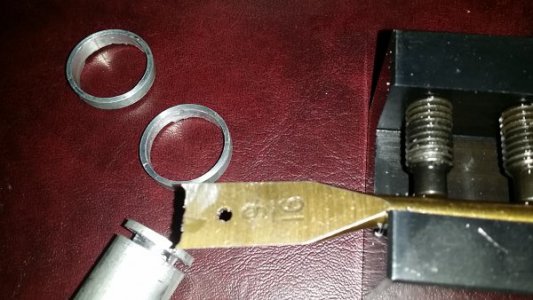A week or so ago I saw that the LED task lighting the previous owner installed on my mill was rated 85-265v a.c. but he had been running it from 120v from a little power strip and I initially did the same thing. So I tapped off the load side of the ‘start’ contactor so that when the mill is on/enabled the task lighting is also. The contactor had enough space on the din rail to slide a couple 3 wire terminal blocks in next to it to simplify the wiring.
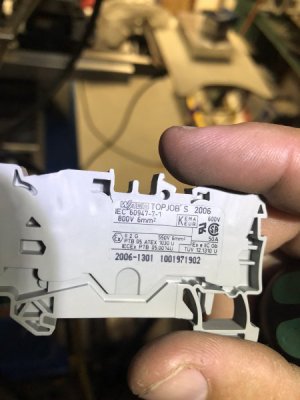
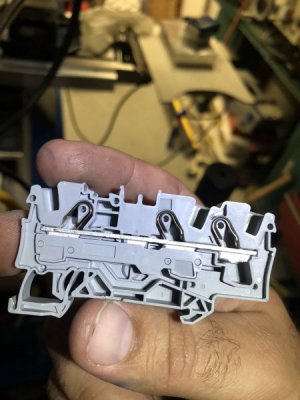
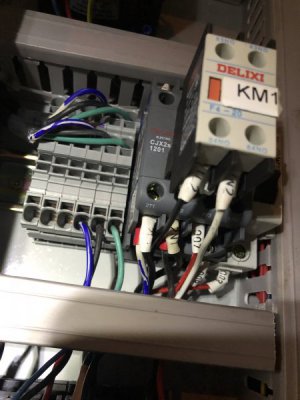
Right now I’m working on a mounting plate to put my lathe chuck onto the rotary table. Made a mandrel to fit a 3/4” collet and to match the mt2 opening on the top of the rotary table, the body of it is the center of the chuck bore and the adapter plate hole. I turned down a couple bolts and threaded them metric to match the cam bolts for the d1-5 spindle the mandrel will stay in the chuck/aluminum plate to locate it and I’m thinking 2 bolts will suffice for keeping it from spinning. I found that I didn’t thread one of them far enough so I’m going to reduce the shank behind the threads for 1/4” or so for the bolt to be able to fully seat them trim them to length.
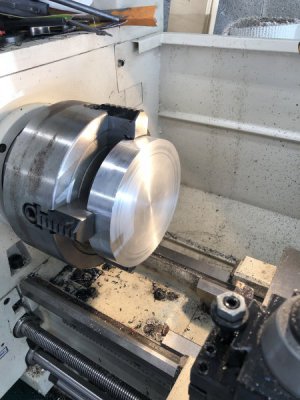
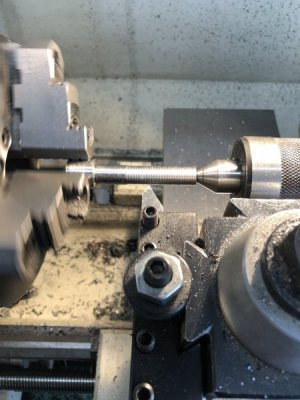
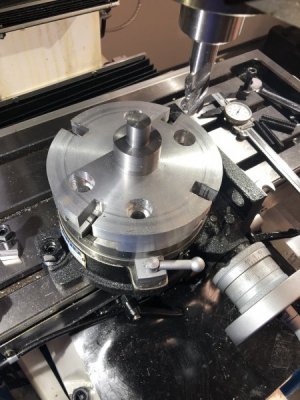
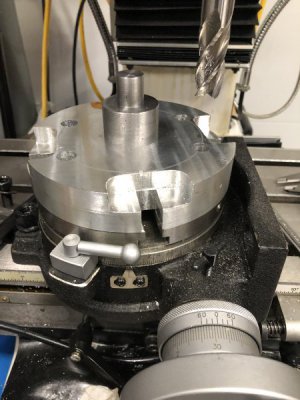



Right now I’m working on a mounting plate to put my lathe chuck onto the rotary table. Made a mandrel to fit a 3/4” collet and to match the mt2 opening on the top of the rotary table, the body of it is the center of the chuck bore and the adapter plate hole. I turned down a couple bolts and threaded them metric to match the cam bolts for the d1-5 spindle the mandrel will stay in the chuck/aluminum plate to locate it and I’m thinking 2 bolts will suffice for keeping it from spinning. I found that I didn’t thread one of them far enough so I’m going to reduce the shank behind the threads for 1/4” or so for the bolt to be able to fully seat them trim them to length.







